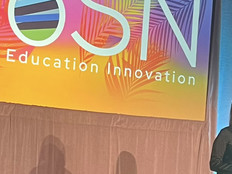As K–12 administrators and IT leaders consider the ways they will allocate their ESSER II funding ahead of the September 2023 deadline, many are interested in how they can get the most out of their money. There are also concerns about the fiscal cliff. When the deadline for spending ESSER III funds passes at the end of September 2024, districts will need to find ways to maintain the technologies they invested in using federal funds.
Fortunately, the state coffers continue to grow, making the funding difference between 2020 and 2024 much narrower than experts originally anticipated. The excess money comes from higher employment rates and increased property values. The former boosts the state coffers and, because of subsequently higher property taxes, the latter increases funds for the local government. There will still be a funding cliff when the ESSER funds expire, but it will be narrower and more manageable for schools that make the right investments.
Other lasting investments include network upgrades. Schools should consider making the switch to a newer wireless standard, such as Wi-Fi 6, and use the ESSER dollars to upgrade components of their infrastructure. Network assets often have a lifespan of at least five to six years. The money could also be used for cabling, which would need to be updated for newer Wi-Fi to operate effectively.
DIVE DEEPER: How do you know when it’s time to upgrade your schools’ cabling?
Fund Districtwide Projects Bearing Larger Upfront Costs
Consider investing ESSER II and ESSER III funding into large projects that will benefit the district for years without high maintenance costs.
Many schools chose to set up private LTE networks to get students connected during the pandemic. Standing up a tower to support this network is a large upfront cost, but maintaining the tower and network won’t require an ongoing investment at the same price. Schools should use ESSER dollars for these types of projects that they wouldn’t otherwise be able to initiate.
In the same vein, design and installation services are an effective way to spend ESSER funds. Schools considering new networks to accommodate a larger number of devices or those that are looking to modernize their security setup to keep students safe should approach these overhauls with a plan. CDW’s team of experts can help districts design a plan, and they offer installation and configuration services to ensure schools have a strong foundation for their upgrades. These one-time costs for services can be funded with ESSER, without the fear of budgeting for them again in a couple of years.
Professional development is another upfront cost that districts should consider funding with ESSER dollars. With an influx of new technologies and teaching practices, investing in the district’s personnel will ensure that schools are getting the most out of their tech purchases.
This article is part of the “ConnectIT: Bridging the Gap Between Education and Technology” series. Please join the discussion on Twitter by using the #ConnectIT hashtag.
![[title]Connect IT: Bridging the Gap Between Education and Technology](http://www.edtechmagazine.com/k12/sites/default/files/articles/2014/05/connectit.jpg)
Illustration by Brian Stauffer, Getty Images/DGLimages (students); Fonikum (icons)







![[title]Connect IT: Bridging the Gap Between Education and Technology](http://www.edtechmagazine.com/k12/sites/default/files/articles/2014/05/connectit.jpg)




